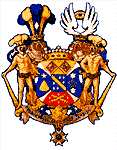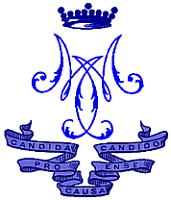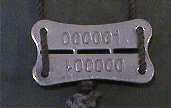


In the centre, as its heart shield, was the coat-of-arms of Augustin Mannerheim, raised to the nobility in 1693, with six square-like figures. When the family was promoted to baronage, four sections were added to the coat-of-arms in 1768. These figures had their origins in the emblems of the military detachment of the first baron and the family coats-of-arms of their spouses. The upper section consists of two flags of Dalecarlia, and the lower of the emblems of artillery (two guns crossed and four bullets), with an ore mountain and a star from the coat-of-arms of the Funck family on the left, and a fort and two stars from the coat-of-arms of the Söderhjelm family on the right.
The decorations of the Swedish Knighthood of Seraphim and the Danish Elephant Knighthood, which were awarded to Mannerheim in 1919, required a coat-of-arms and a special motto from the bearer. In 1922 Mannerheim chose a Latin motto: Candida pro causa ense candido (with pure arms for a pure cause). As his emblem, Mannerheim preferred the monogram and the motto to the coat-of-arms.

Name | Flag Day | Friends | Funeral | Ideology | Language | Symbol | Emblems |
COURSE OF LIFE | FAMILY | TIME OF GROWTH | MILITARY CAREER | WAR OF INDEPENDENCE | REGENT 1918-1919 | CIVILIAN | DEFENCE COUNCIL | COMMANDER-IN-CHIEF 1939-1946 | PRESIDENT OF THE REPUBLIC 1944-1946 | RETIREMENT | SPECIAL TOPICS | SEARCH
